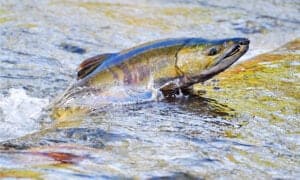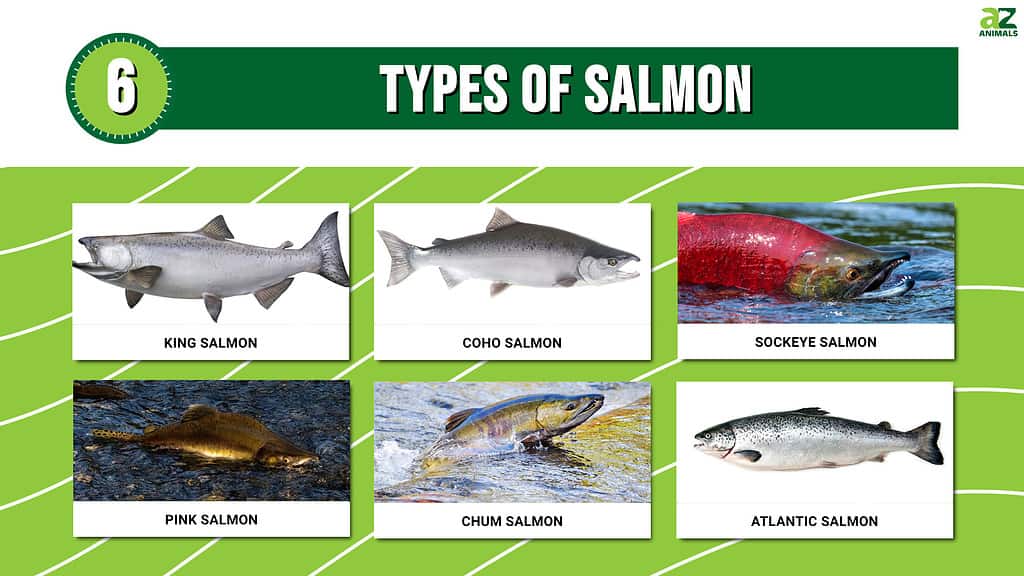
Many people may think that there’s only one species of salmon. However, there are actually several. In North America alone, there are six types of salmon. Five live in the Pacific Ocean, with the other one living in the Atlantic Ocean.
Whether you go fishing or just want to learn more about salmon for your own expertise, it’s a good idea to know the differences between the species. Read on to learn more about six types of salmon and their distinctive features!
King Salmon
Also known as the Chinook salmon, the king salmon is the largest of all the salmon in the world. They often weigh over 100 pounds and can be up to five feet long.
King salmon are also fairly ubiquitous in North America. They can be found along the coasts of southern California, all the way up to the freezing waters of northern Alaska. You may also find them in any one of the five Great Lakes.
In the Western Pacific Ocean, you can find king salmon from the coasts of Japan all the way up to the East Siberian Sea and Arctic Ocean.
Other than their massive size, the most prominent distinguishing feature of this salmon species is the black color of their gums and interior of their mouths. They also have little round spots on their backs and tails, as well as the upper halves of their heads. King salmon have big teeth and large mouths. They have dark-colored backs and lighter sides.
When these salmon spawn, their mouths and heads grow in length, and their tails and bodies change color to maroon or olive brown.
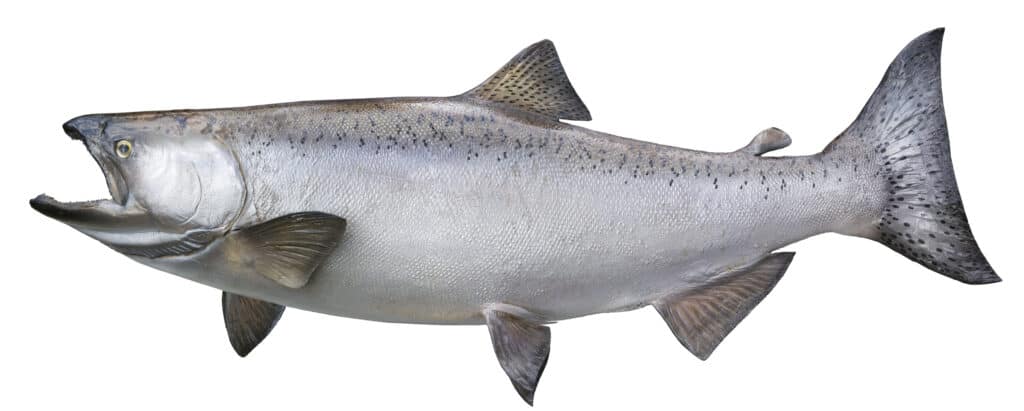
King salmon is found in many parts of the United States.
©Dan Thornberg/Shutterstock.com
Coho Salmon
The Coho salmon can vary in coloration. In oceans, they have blue or dark blue backs and deep silver flanks. In freshwater, their heads are green or greenish-blue, their sides will be a reddish color, and they will have small dark spots on their backs. They usually weigh between 8 and 12 pounds and are 24 to 30 inches in length.
These salmon have black mouths like the king salmon, but they have white gums. They only have spots on the top halves of their tails, although they do have spots along their backs. During spawning, they take on a very distinctive appearance, turning maroon or bright red with a dark tail, head, and back. Males develop a long, hooked nose during this time.
These fish can be found in the Northern Pacific Ocean. On the western side, they live off the coast of Eastern Russia and Japan. On the North American coast, they live along the shores of Alaska down to Oregon. They also inhabit all five of the Great Lakes. These are known as the toughest fish, which tend to fight the hardest when caught.

Coho salmon are known as tough fish and fight the hardest when caught.
©Keith Publicover/Shutterstock.com
Sockeye Salmon
Sockeye salmon fish have a high-fat content, causing many people to see them as a culinary delicacy. They live along the shores of Washington all the way up to Alaska. They inhabit every one of the Great Lakes, with Lake Superior being the only exception. In the western Pacific, they inhabit the shores of Japan, all the way up to Siberia.
In terms of appearance, these fish live up to their name. Their golden eyes are much bigger and more prominent than those of other types of salmon. They have white gums and a white interior of the mouth. These salmon do not have any spots on their tails or backs.
Each of these fish has 30 to 40 long, serrated gill rackers. They weigh between 4 and 15 pounds and are usually 1.5 to 2.5 feet in length.
In saltwater, their bodies are silver or blue. When spawning, these fish head into freshwater and turn bright red with green heads and tails. Males grow bumps on their backs, in addition to having a hooked nose and jaw.

The Sockeye salmon is considered a culinary delicacy.
©Sergey Uryadnikov/Shutterstock.com
Pink Salmon
The smallest of the Pacific salmon, pink salmon weigh 3.5 to 5 pounds and are typically 20 to 25 inches long. These salmon have a little bit of a pink hue on their silver bodies. They have dark spots on their bodies, as well as large, oval-shaped spots on each half of their tails. They have a white color in the interior of the mouth, with dark gums.
When these salmon spawn, they develop a prominent hump on their backs. The top half of the body turns gray, and the bottom half is a whitish color during this time.
The pink salmon is the most abundant salmon species in the world.
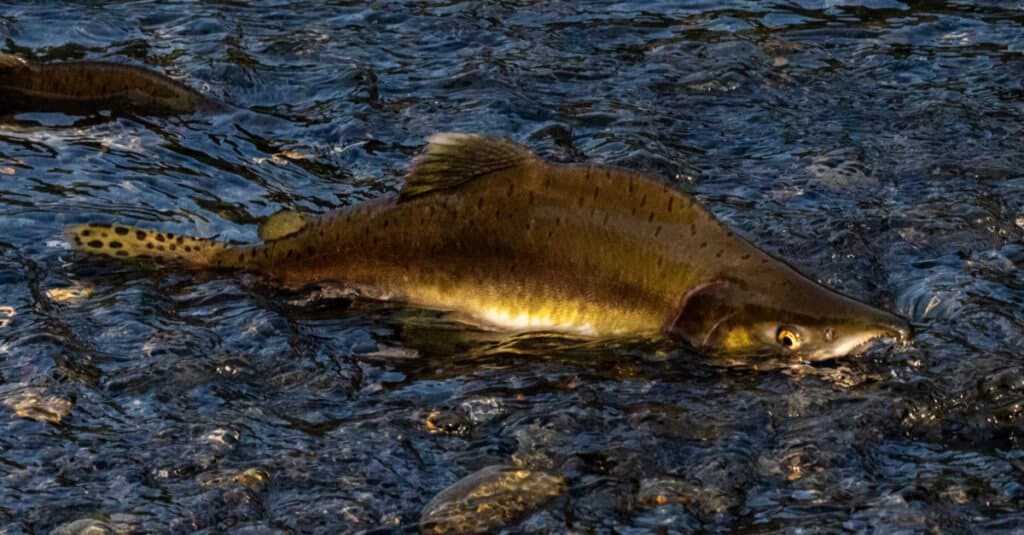
The pink salmon is the smallest salmon species.
©Mark A. McCaffrey/Shutterstock.com
Chum Salmon
Chum salmon look quite a bit like Sockeye salmon, with no spots and white mouths. However, chum salmon have bands of color along the length of their bodies. They also have significantly larger teeth than other salmon species. On average, they weigh 8 to 15 pounds, although they can grow to be as large as 30 to 35 pounds. They can be up to 3.6 feet long.
During spawning, these fish turn a unique green color with purple stripes. Like Coho and Sockeye salmon, they develop hooked mouths. They usually live deeper in the water than other salmon.
These salmon live along the northwestern coasts of the United States, all the way up to the Gulf of Alaska. These salmon never made their way into the Great Lakes, unlike the other Pacific salmon species.
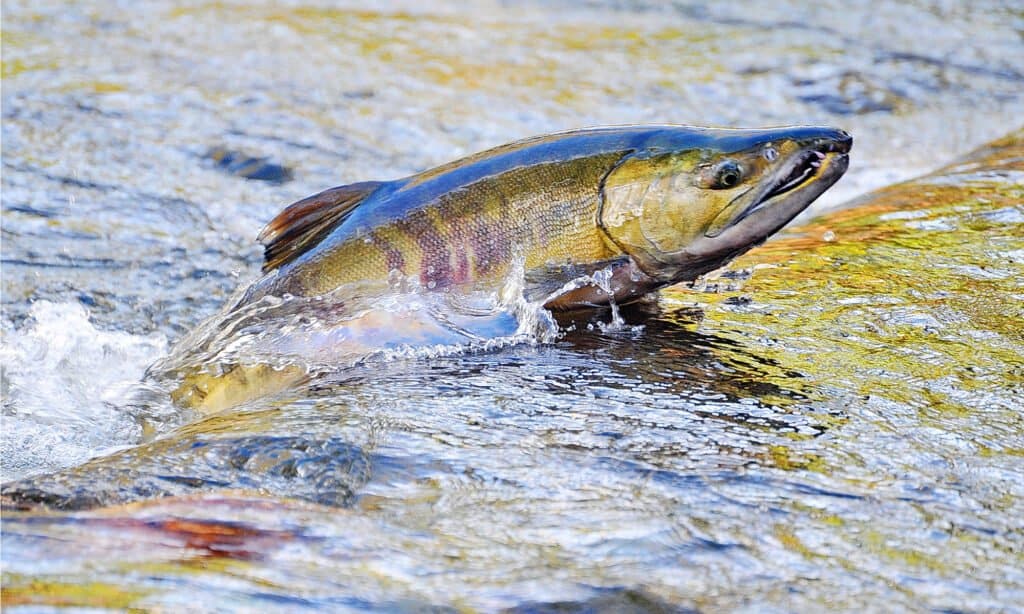
Chum salmon look similar to sockeye salmon.
©The Old Major/Shutterstock.com
Atlantic Salmon
Unlike the other salmon species on this list, the Atlantic salmon inhabits the Atlantic Ocean. In North America, these salmon can be found between the shores of Connecticut to those of Northern Labrador in Canada. Along the shores of Europe, they can be found from Portugal to Greenland, Iceland, and Norway.
Due to fishing, the Atlantic salmon is an endangered species at this point. These salmon are typically 28 to 30 inches long and weigh between 8 and 12 pounds.
Juveniles can spend years in running freshwater. However, they eventually go to the sea or ocean. In freshwater, they usually have a dark red or brown color. The color changes to bright silver in salt water. Adults have black spots on their backs and the upper parts of their gill plates in many cases. Their bellies are usually whitish or silver.
Unlike their counterparts in the Pacific Ocean, these salmon do not die after spawning.
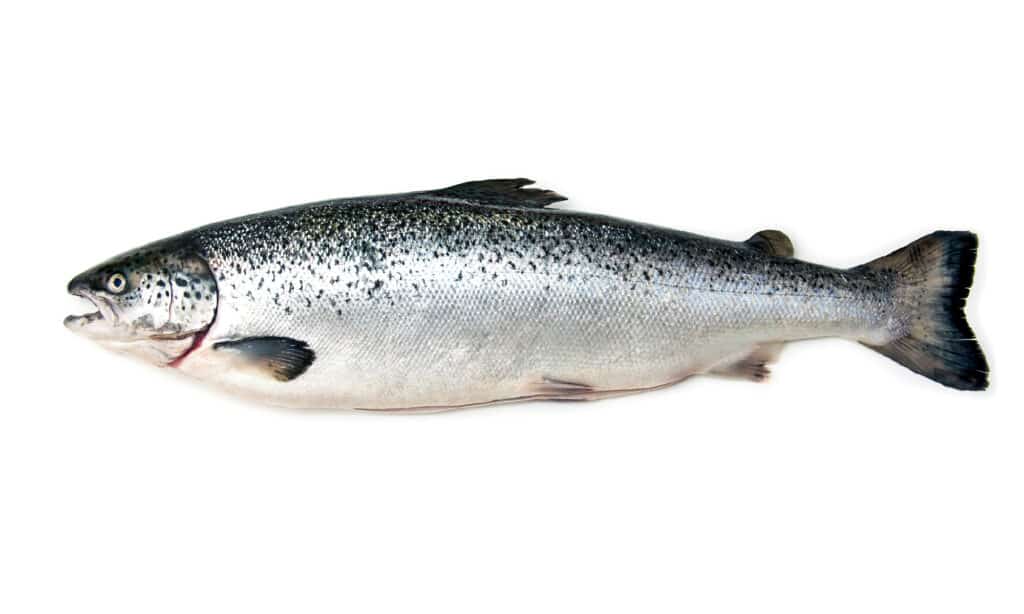
The Atlantic salmon is an endangered salmon species.
©iStock.com/EddWestmacott
Summary Of The 6 Types Of Salmon
| Rank | Salmon |
|---|---|
| 1 | King Salmon |
| 2 | Coho Salmon |
| 3 | Sockeye Salmon |
| 4 | Pink Salmon |
| 5 | Chum Salmon |
| 6 | Atlantic Salmon |
The photo featured at the top of this post is © iStock.com/John Pennell
Thank you for reading! Have some feedback for us? Contact the AZ Animals editorial team.




